




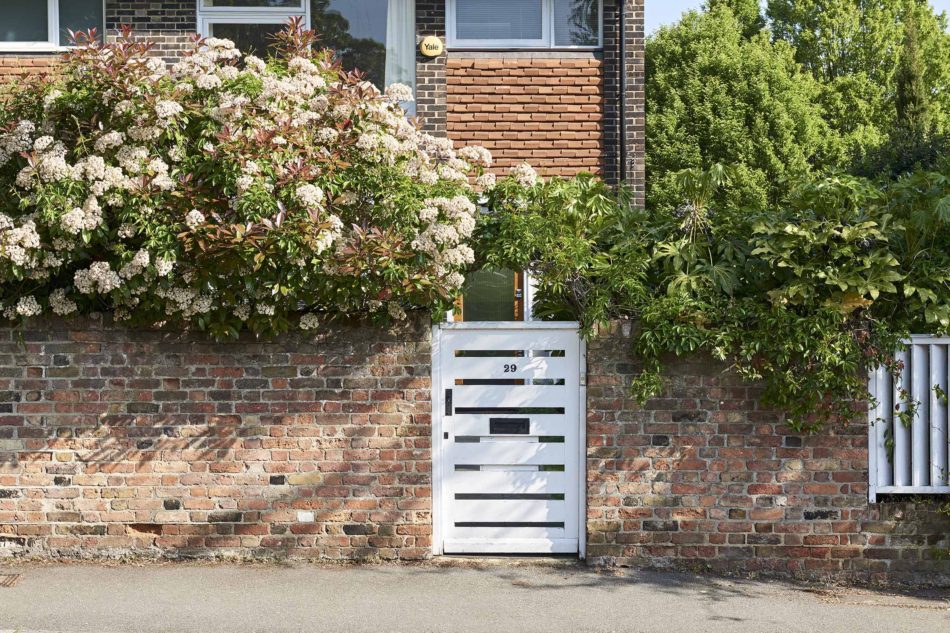






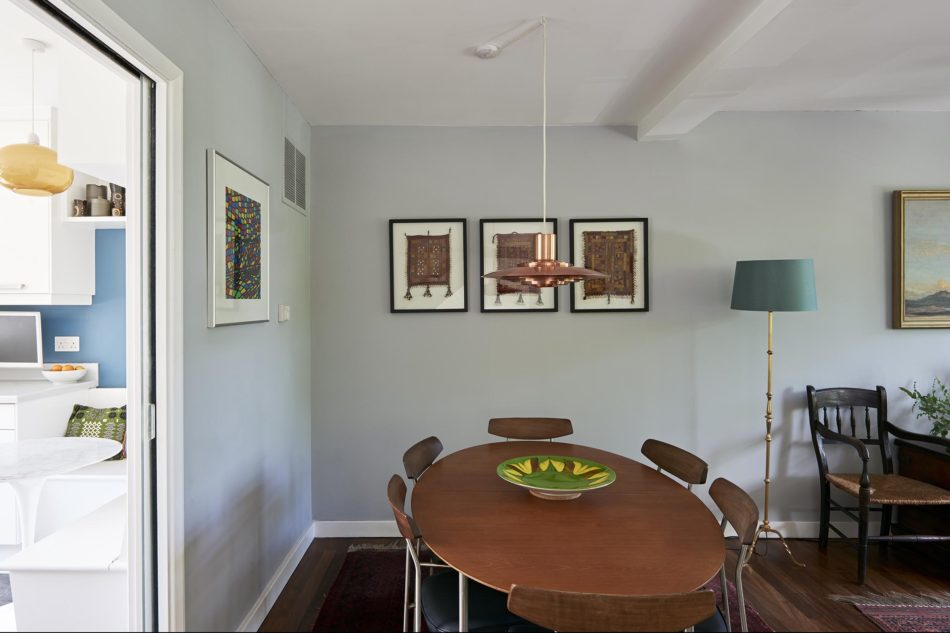

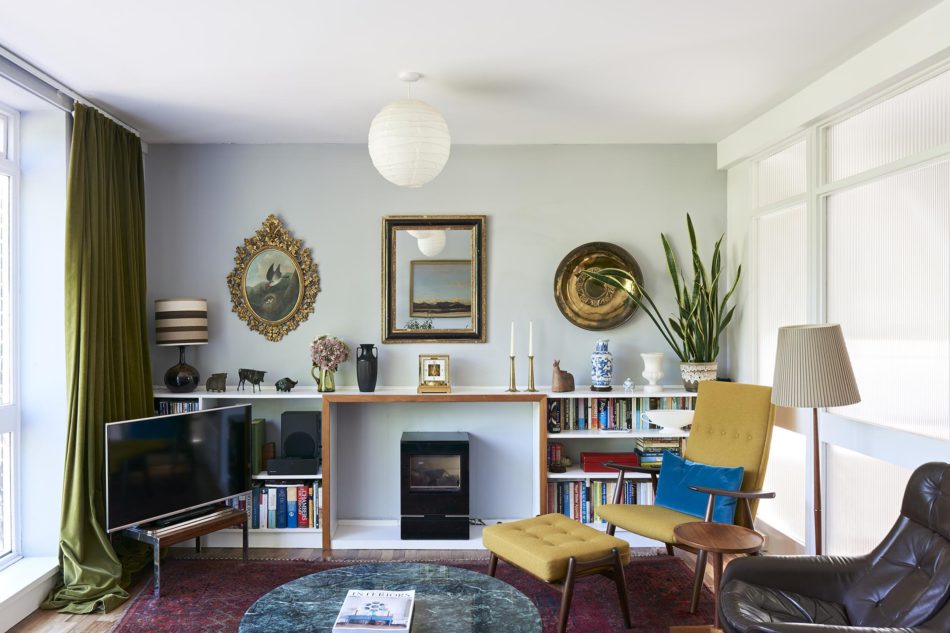



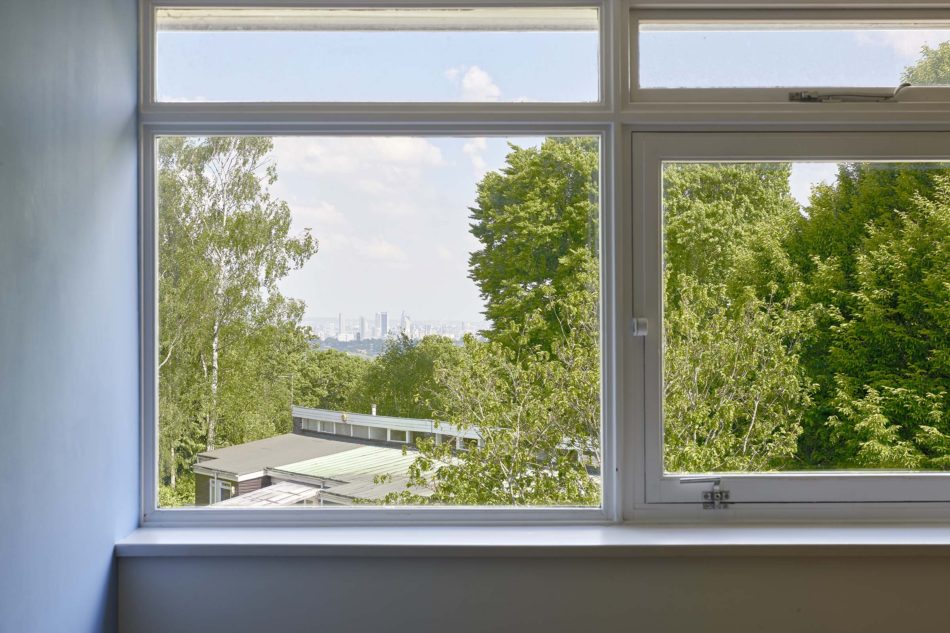
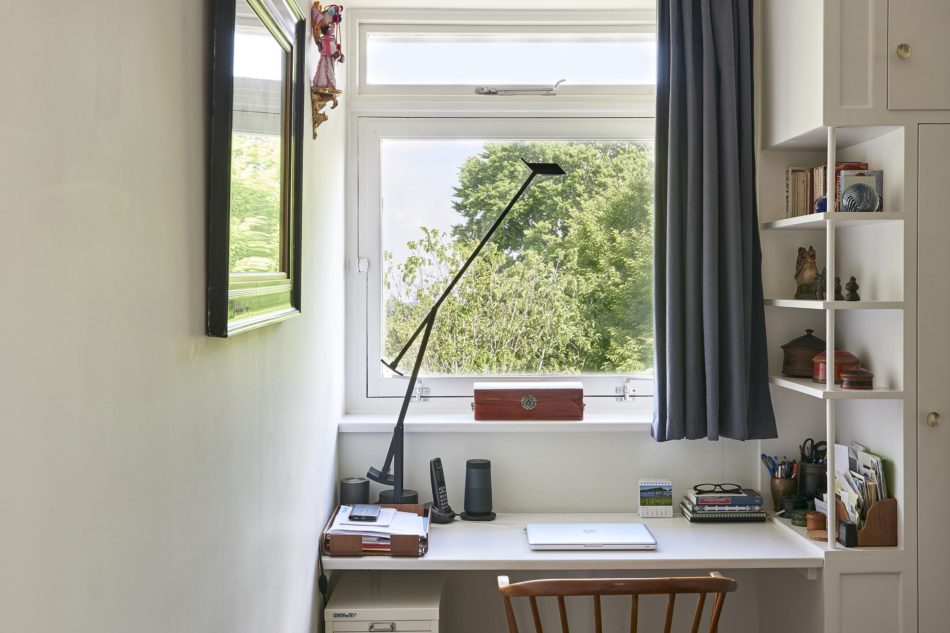


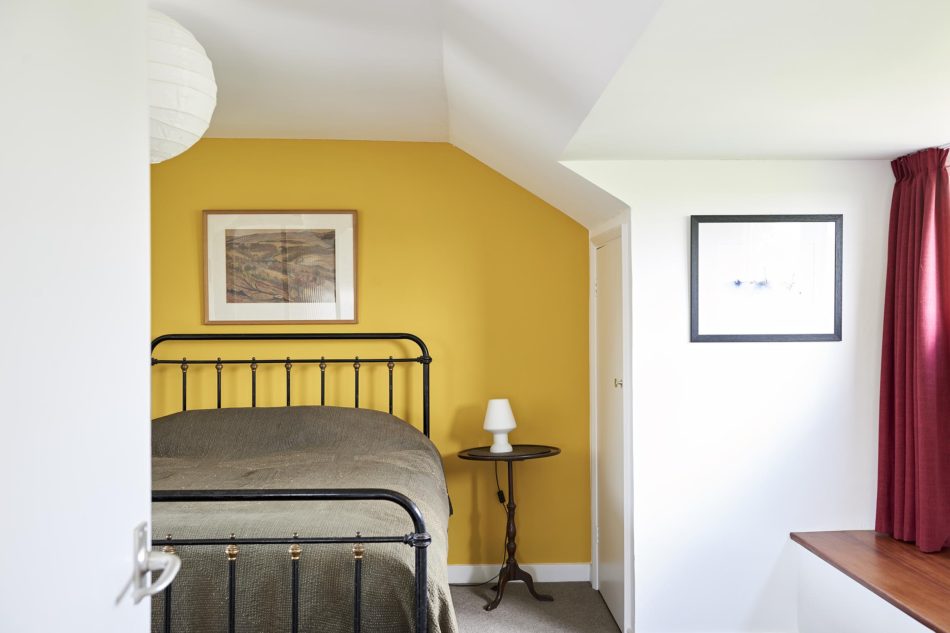





Crescent Wood Road
London SE26
Architect: Austin Vernon & Partners
Register for similar homes"...exceptional views of the city and nearby woodland are welcomed into the home, through vast sections of glazing and fluted glass."
This bright four-bedroom Modern house makes wonderful use of its position on Crescent Wood Road, cut into a gentle slope at the top of Sydenham Hill. Designed in 1963 by Malcolm Pringle, of Austin Vernon & Partners, the house forms part of the Dulwich Estate, an area famed for its proliferation of exceptional Mid-Century architecture.
Crescent Wood Road forms part of the Peckarmans Wood phase of the Dulwich Estate development. The quiet residential street sits at the top of Sydenham Hill, overlooking protected woodland below with far-reaching views to the north of London’s ever-changing skyline. Pringle was sure to exploit these houses’ enviable position at the crest of the hill, designing each of the terraces with large sections of glazing and balconies, turning each window into a framed landscape of the city.
This particular house sits at the end of its terrace and is arranged across four storeys. It is presented in excellent condition and has been carefully maintained and sympathetically updated over the years by the current owners.
Entry is gained at ground level on Crescent Wood Road, via a private gated front garden which is bathed in sunlight throughout the day. This area has a patio and lawn past which access is gained to the house itself. A modern kitchen is positioned to one side of the entrance hall, with a built-in dining nook and separate access onto the front patio.
At the rear of the house is arguably the most impressive space, a large open-plan dining and reception room. The majority of this space’s aspect is glazed from floor to ceiling, bathing the rooms in wonderful levels of natural light. There is also a small balcony, accessed via glazed doors. The flow of light on this level of the house is emphasised by original fluted glass partitions between the rooms.
The first floor is comprised of three bedrooms and a bathroom. One of these bedrooms is currently used as a second reception room, another is used as a study. The second floor has a master bedroom with en-suite bathroom.
Crescent Wood Road’s hillside position allows access to the lower ground floor from Peckarman’s Wood at the rear. This level has a private garage with lots of storage space and a separate utility room. Some houses in the vicinity have converted this space into further living accommodation. There is unallocated parking for residents on the estate. Beyond Peckarmans Wood, the estate opens up onto beautifully maintained, landscaped communal gardens.
An area well known for its exceptional Modern architecture, the Dulwich Estate is composed of approximately 1,500 acres in South East London and includes numerous private roads that are managed by the Estate. It is noted for its concentration of outstanding 1950s and 60s design, much of it by Austin Vernon & Partners. Ranging from large detached houses to rows of smaller terraced houses, the mix of properties as well as the exceptional landscaping and planting make for an appealing and unique place to live.
Sydenham Hill is one of the highest points in South London. Views from the house take in Canary Wharf, the City and the West End, stretching as far as Wembley, Highgate and Alexandra Palace.
The house is surrounded by Dulwich and Sydenham Hill Woods, which are a wildlife nature reserve. This is combined with Dulwich and Sydenham Hill Golf Course as well as allotments and sports club grounds to provide an unbroken green space as far as Dulwich Park and Lordship Lane. Other local attractions include The Dulwich Picture Gallery, The Horniman Museum and the local town centres of Crystal Palace and Dulwich Village.
Crystal Palace, which has previously been named as number five on Lonely Planet’s “Greatest little-known neighbourhoods in the world”, is a fifteen-minute walk away and is a vibrant area with award-winning restaurants and bars as well as having a thriving arts and music scene. Dulwich Village is also a fifteen-minute walk from the house, and the street is well placed for OFSTED ‘outstanding’ primary and secondary state schools as well as some of the best private schools in London.
Crescent Wood Road is a short walk on a footpath to Sydenham Hill station, which runs services to London Victoria (15 minutes), Blackfriars (18 minutes). Overground trains from Forest Hill or Sydenham run to Canada Water (20 minutes).
Please note that all areas, measurements and distances given in these particulars are approximate and rounded. The text, photographs and floor plans are for general guidance only. The Modern House has not tested any services, appliances or specific fittings — prospective purchasers are advised to inspect the property themselves. All fixtures, fittings and furniture not specifically itemised within these particulars are deemed removable by the vendor.




History
Crescent Wood Road is situated in part of a large area of land in South East London that has been maintained for over 400 years by the Dulwich Estate. In the 1950s the estate ran into difficulty. The area had been badly damaged during the Second World War, and lease lengths were running so short that banks were no longer happy to lend on the houses and selling was becoming more and more difficult. People were leaving the area and renting their houses out.
In 1954, Austin Vernon & Partners were called on to design a scheme that would rejuvenate the Dulwich Estate. Vernon himself had formerly been a pupil at Dulwich College from 1898 -1901 and so knew this area well, whilst his uncle Frederick Austin Vernon (1882-1972) had already been the surveyor and architect to the Dulwich Estate.
By 1957 Vernon’s first scheme of building was completed. The blocks on Farquhar Road were the first to be built and they proved to be such a success that a second scheme began, encompassing the nearby Lymer Road and beyond. Over the next 20 years more than 2,000 new homes were designed by Austin Vernon & Partners, including those of Giles Coppice, Peckarmans Wood and Crescent Wood Road resulting in a remarkable area of 1950s and 60s-era architecture.
The houses and flats were designed to a high standard, with use of large expanses of glass, open rooms and central heating. Also quite remarkable was the landscaping that was planned for the estate. The roads were separated from pedestrian areas and large areas were given over to communal gardens and spinneys. The result was an estate which was and remains beautifully designed, verdant and peaceful.
























